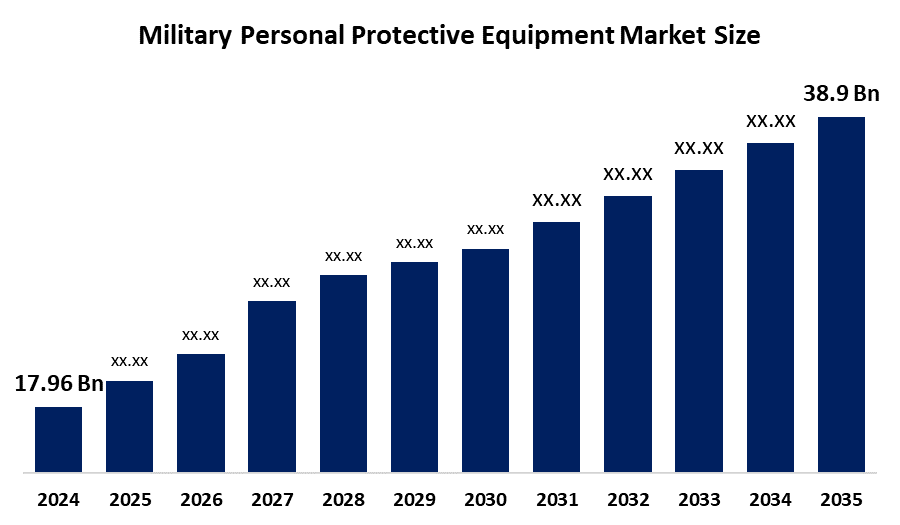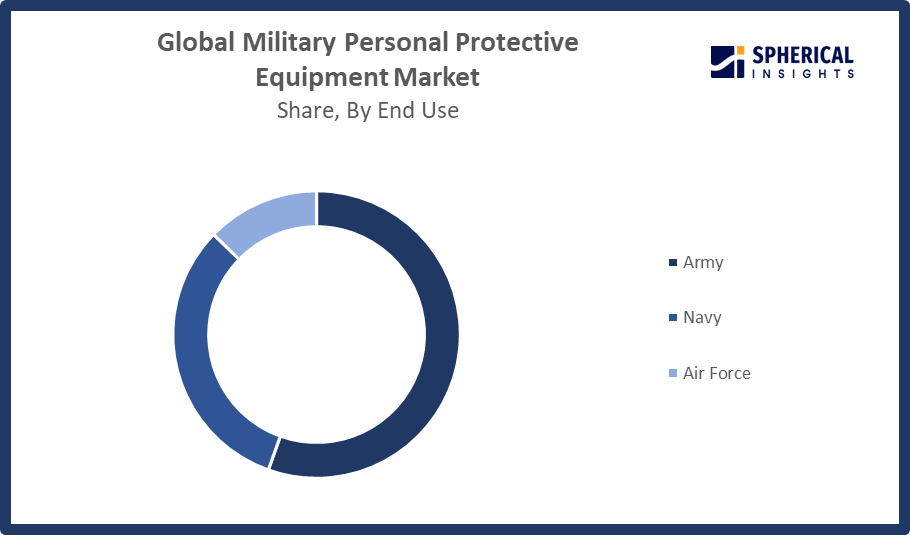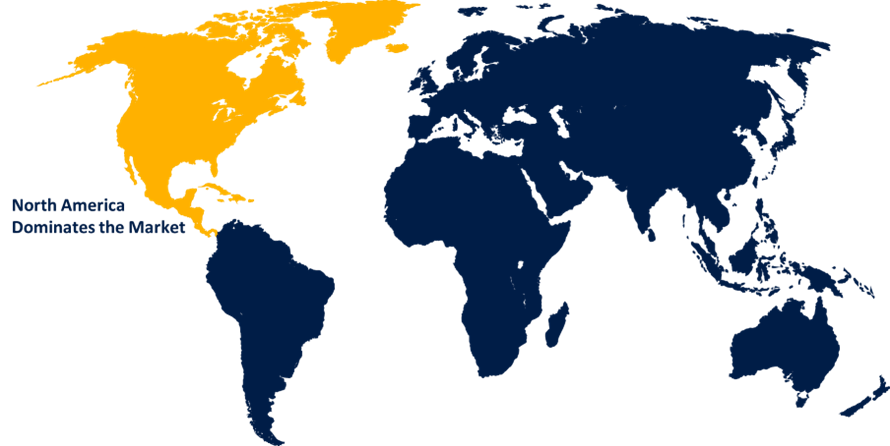Global Military Personal Protective Equipment Market Size, Share, and COVID-19 Impact Analysis, By Product (Body Armor, Tactical Vest, Eye Protection, Combat Helmet, Life Safety Jacket, Pelvic Protection, Respiratory Protection, and Others), By End Use (Army, Navy, and Air Force), and By Region (North America, Europe, Asia-Pacific, Latin America, Middle East, and Africa), Analysis and Forecast 2025 - 2035
Industry: Advanced MaterialsGlobal Military Personal Protective Equipment Market Insights Forecasts to 2035
- The Global Military Personal Protective Equipment Market Size Was Estimated at USD 17.96 Billion in 2024
- The Market Size is Expected to Grow at a CAGR of around 7.28% from 2025 to 2035
- The Worldwide Military Personal Protective Equipment Market Size is Expected to Reach USD 38.9 Billion by 2035
- Asia Pacific is expected to grow the fastest during the forecast period.

Get more details on this report -
According to a research report published by Spherical Insights and Consulting, The Global Military Personal Protective Equipment Market Size was worth around USD 17.96 Billion in 2024 and is predicted to grow to around USD 38.9 Billion by 2035 with a compound annual growth rate (CAGR) of 7.28% from 2025 to 2035. The demand for cutting-edge military personal protection equipment is being driven primarily by increased defence spending across countries and growing geopolitical tensions.
Market Overview
The global military personal protective equipment market refers to protective gear designed to safeguard soldiers from ballistic, chemical, biological, and physical threats, enhancing survivability and operational effectiveness in modern combat environments. Growing government investments in improving soldier survivability in the face of asymmetric attacks, urban conflict, and modern warfare are driving the market for military personal protection equipment. The need for standardised, high-performance protective gear is fuelled by increased involvement in border conflicts, counterterrorism operations, and peacekeeping missions. Programs to modernize soldiers, especially in Asia-Pacific and North America, are speeding up the adoption of next-generation, modular, and adaptable equipment that may be used in a variety of terrains. Although regional and specialist suppliers meet specific demands, the market is moderately concentrated, with dominant manufacturers controlling the market through long-term defence contracts, sophisticated R&D, and stringent quality certifications. With an emphasis on ergonomic designs, lightweight materials, and smart technologies like wearable sensors and communication systems, innovation is a crucial aspect of the market. The constant pace of mergers and acquisitions allows for portfolio development and increased access to defence contracts.
The need for sophisticated military PPE, such as body armour, ballistic helmets, and CBRN suits, is being driven by escalating military activities and geopolitical tensions. Growth is being propelled by initiatives to modernise soldiers in the US, China, and India, as well as by developments in lightweight composites and smart equipment. Strong prospects for market expansion are also presented by regional investments in the Asia Pacific, the Middle East, and Latin America, as well as the desire for modular, technologically integrated equipment.
Report Coverage
This research report categorizes the military personal protective equipment market based on various segments and regions, forecasts revenue growth, and analyzes trends in each submarket. The report analyses the key growth drivers, opportunities, and challenges influencing the military personal protective equipment market. Recent market developments and competitive strategies such as expansion, type launch, development, partnership, merger, and acquisition, have been included to draw the competitive landscape in the market. The report strategically identifies and profiles the key market players and analyses their core competencies in each sub-segment of the military personal protective equipment market.
Global Military Personal Protective Equipment Market Report Coverage
| Report Coverage | Details |
|---|---|
| Base Year: | 2024 |
| Market Size in 2024: | USD 17.96 Billion |
| Forecast Period: | 2025-2035 |
| Forecast Period CAGR 2025-2035 : | USD 38.9 Billion |
| 2035 Value Projection: | USD 38.9 Billion |
| Historical Data for: | 2020-2023 |
| No. of Pages: | 240 |
| Tables, Charts & Figures: | 118 |
| Segments covered: | By Product, By Product and By Region |
| Companies covered:: | 3M, Honeywell International, ArmorWorks, Eagle Industries., BAE Systems, DuPont, dsm-firmenich., ArmorSource, LLC., MSA., Revision Military, GENTEX CORPORATION, ANSELL LTD., MKU LIMITED, Avon Protection, Body Armour, Others, and |
| Pitfalls & Challenges: | COVID-19 Impact, Challenges, Future, Growth, & Analysis |
Get more details on this report -
Driving Factors
Growing military conflicts, rising geopolitical tensions, and increased investments in cutting-edge defence technologies are driving the global market for military personal protective equipment. In nations including the U.S., China, and India, governments are putting military safety first through modernisation initiatives. Comfort and functionality are improved by developments in wearable technology, smart materials, and lightweight composites. The growing need for multipurpose, modular PPE fuels expansion even more. Furthermore, there are a lot of chances for market expansion and innovation due to growing defence budgets, regional production programs, and cross-border defence partnerships.
Restraining Factors
Adoption may be restricted by the high costs of sophisticated PPE technology, particularly in developing countries with limited defence budgets. Development and approval of new products are slowed down by strict military certification and regulatory compliance. Long defence sales cycles and intricate procurement procedures make it difficult for new firms to enter the market. Disruptions in the supply chain might also impact the prompt delivery of essential parts.
Market Segmentation
The Military Personal Protective Equipment market share is classified intoproduct and end use.
- The body armor segment dominated the market in 2024, approximately 21% and is projected to grow at a substantial CAGR during the forecast period.
Based on the product, the military personal protective equipment market is divided into body armor, tactical vest, eye protection, combat helmet, life safety jacket, pelvic protection, respiratory protection, and others. Among these, the body armor segment dominated the market in 2024 and is projected to grow at a substantial CAGR during the forecast period. Due to its vital role it plays in protecting soldiers from shrapnel and ballistic threats. Defence agencies have prioritised the procurement of body armour due to the growing number of deployments in war zones and the increase in deaths. Adoption is being further stimulated by technological advancements like as modular designs and lightweight ceramics. Furthermore, many countries need body armour for ground forces as a standard equipment.

Get more details on this report -
Regional Segment Analysis of the Military Personal Protective Equipment Market
- North America (U.S., Canada, Mexico)
- Europe (Germany, France, U.K., Italy, Spain, Rest of Europe)
- Asia-Pacific (China, Japan, India, Rest of APAC)
- South America (Brazil and the Rest of South America)
- The Middle East and Africa (UAE, South Africa, Rest of MEA)
North America is anticipated to hold the largest share with approximately 36.5% of the Military Personal Protective Equipment market over the predicted timeframe.

Get more details on this report -
North America is anticipated to hold the largest share of the military personal protective equipment market over the predicted timeframe. North America's substantial defence budget and ongoing investments in troop protection have allowed it to dominate the worldwide industry. The emphasis on cutting-edge, technologically integrated protective gear by the US military propels large purchases. Further solidifying regional dominance are well-established defence contractors and innovation hubs. Additionally, the government's modernisation efforts for soldiers maintain the steady need for PPE. The U.S. Department of Defence consistently makes investments in cutting-edge PPE to modernise and safeguard its forces. Demand is driven by ongoing initiatives for integrated helmets, ballistic armour, and smart wearables. Strong domestic R&D and production capacities reinforce its dominant position.
Asia Pacific is expected to grow the fastest market share with approximately 25% at a rapid CAGR in the military personal protective equipment market during the forecast period. Rising defence spending and regional geopolitical tensions are expected to increase in the Asia Pacific military PPE market during the projected period. The military forces of nations like South Korea, China, and India are modernising at a rapid pace. Cross-border conflicts and domestic defence manufacturing are driving up demand for PPE. Increasing the number of military personnel also results in increased purchase volumes. The market for military PPE in China is fuelled by the country's sizable military force and growing defence budget. The government places a strong emphasis on modernizing its troops and producing cutting-edge protective equipment domestically.
Europe is expected to grow at a rapid CAGR in the military personal protective equipment market during the forecast period. The market for military personal protective equipment in Europe is steadily expanding due to growing NATO obligations and worries about regional security. For deployed personnel, nations like the United Kingdom, Germany, and France are modernising their protective gear. Additionally, the need for enhanced PPE has been reaffirmed by the rise in terrorist threats. The resilience of the supply chain is being increased through cooperation with domestic firms. The UK's substantial defence budget and worldwide deployment obligations have made it the market leader for military personal protective equipment in Europe.
Competitive Analysis:
The report offers the appropriate analysis of the key organizations/companies involved within the military personal protective equipment market, along with a comparative evaluation primarily based on their type of offering, business overviews, geographic presence, enterprise strategies, segment market share, and SWOT analysis. The report also provides an elaborative analysis focusing on the current news and developments of the companies, which includes type development, innovations, joint ventures, partnerships, mergers & acquisitions, strategic alliances, and others. This allows for the evaluation of the overall competition within the market.
List of Key Companies
- 3M
- Honeywell International
- ArmorWorks
- Eagle Industries.
- BAE Systems
- DuPont
- dsm-firmenich.
- ArmorSource, LLC.
- MSA.
- Revision Military
- GENTEX CORPORATION
- ANSELL LTD.
- MKU LIMITED
- Avon Protection
- Body Armour
- Others
Key Target Audience
- Market Players
- Investors
- End-users
- Government Authorities
- Consulting and Research Firm
- Venture capitalists
- Value-Added Resellers (VARs)
Market Segment
This study forecasts revenue at global, regional, and country levels from 2020 to 2035. Spherical Insights has segmented the military personal protective equipment market based on the below-mentioned segments:
Global Military Personal Protective Equipment Market, By Product
- Body Armor
- Tactical Vest
- Eye Protection
- Combat Helmet
- Life Safety Jacket
- Pelvic Protection
- Respiratory Protection
- Others
Global Military Personal Protective Equipment Market, By End Use
- Army
- Navy
- Air Force
Global Military Personal Protective Equipment Market, By Regional Analysis
- North America
- US
- Canada
- Mexico
- Europe
- Germany
- UK
- France
- Italy
- Spain
- Russia
- Rest of Europe
- Asia Pacific
- China
- Japan
- India
- South Korea
- Australia
- Rest of Asia Pacific
- South America
- Brazil
- Argentina
- Rest of South America
- Middle East & Africa
- UAE
- Saudi Arabia
- Qatar
- South Africa
- Rest of the Middle East & Africa
Frequently Asked Questions (FAQ)
-
1. What is the CAGR of the Military Personal Protective Equipment market over the forecast period?The global Military Personal Protective Equipment market is projected to expand at a CAGR of 7.28% during the forecast period.
-
2. What is the market size of the Military Personal Protective Equipment market?The global Military Personal Protective Equipment market size is expected to grow from USD 17.96 Billion in 2024 to USD 38.9 Billion by 2035, at a CAGR of 7.28% during the forecast period 2025-2035.
-
3. Which region holds the largest share of the Military Personal Protective Equipment market?North America is anticipated to hold the largest share of the Military Personal Protective Equipment market over the predicted timeframe.
-
4. Who are the top 10 companies operating in the global Military Personal Protective Equipment market?3M, Honeywell International, ArmorWorks, Eagle Industries, BAE Systems, DuPont, dsm-firmenich, ArmorSource, LLC, MSA, and Revision Military.
-
5. What factors are driving the growth of the Military Personal Protective Equipment market?The growth of the military personal protective equipment market is driven by rising geopolitical tensions, increasing defense budgets, and modernization programs. Advancements in lightweight materials, smart technologies, and modular designs, along with growing investments in troop safety and regional defense collaborations, further accelerate market expansion.
-
6. What are the market trends in the Military Personal Protective Equipment market?Key trends in the military personal protective equipment market include the integration of smart technologies like wearable sensors and communication systems, adoption of lightweight composite materials, and demand for modular, customizable gear. Additionally, increased localization, defense collaborations, and sustainable material innovations are shaping market evolution.
-
7. What are the main challenges restricting wider adoption of the Military Personal Protective Equipment market?The main challenges include high production and procurement costs, strict regulatory standards, complex defense procurement processes, and limited interoperability across systems, which restrict the wider adoption of military personal protective equipment globally.
Need help to buy this report?